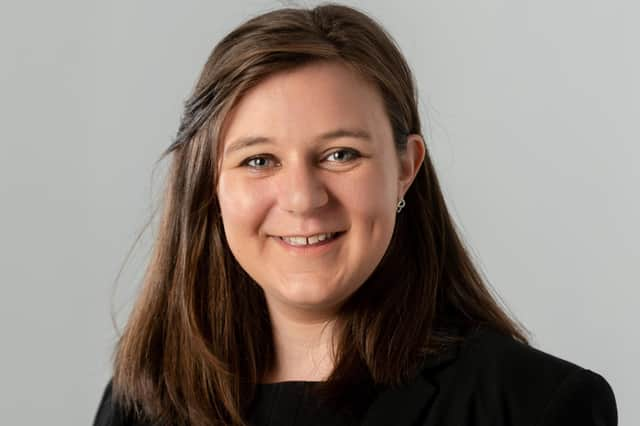Renewable energy projects can be transformational for many communities - Alex Irwin


By working closely with communities where renewables projects are based, a developer can create economic opportunities in the vicinity of a project, tap into local knowledge and enhance support for the development.
Five years ago, when the Scottish Government launched its renewable energy strategy, it hoped that by 2020 at least half of newly consented renewables projects would have an element of shared community ownership. While so-called Shared Community Ownership Schemes have not proven as popular as hoped by some policy makers, Community Benefit Schemes have been popular with developers who want to provide additional advantages to the local community.
Advertisement
Hide AdAdvertisement
Hide AdCommunity Benefit Schemes are voluntary arrangements offered by developers to the communities located near an onshore renewables project. In the past year, Local Energy Scotland has reported over £22 million being paid out to Scottish communities through these schemes to support small business start-up grants, provide further education bursaries, and refurbish local buildings.
Establishing the geographical boundary of a Community Benefit Scheme is a likely consideration for developers. It’s also important for them to dovetail with any pre-existing support structures that may already be in place when working within a community and to identify the right people to engage with at an early stage. Any arrangements that are agreed as part of a Community Benefit Scheme should also be formalised through a legal agreement which clearly sets out the terms of any benefit.
Meanwhile, a Shared Ownership Scheme enables a local community to take direct ownership of a renewable energy project. While shared ownership maximises the advantages achieved through a Community Benefit Scheme by bringing the developer and local community closer together, it is far more complex and typically requires professional guidance. This includes advice on determining the best structure of shared ownership where there are a number of options to consider.
Firstly, there is the Joint Venture Model which normally involves setting up a joint venture vehicle that is partly owned by the local community and the renewables project developer. In most instances the community group would become the minority shareholder, often in exchange for an equity interest. Under this model, the community group could acquire voting rights in the joint venture vehicle which would give it more control over the project.
A Shared Revenue Model, whereby the developer retains ownership of the renewable project with the community group buying an interest in the revenue stream, is another option.
A further option, the Split Ownership Model, allows a renewable energy project to be divided into two or more generating units – for example, the community could take ownership of a specific wind turbine within a development while the project developer would own the other assets. While there are disadvantages to this model including the potential requirement for two grid connections, it can attract a more lucrative community feed-in tariff generating higher revenues from the community-owned assets.
The Build and Transfer Model, where a developer sells a proportion of a renewables project to the local community, can also be used. While there are potential financial benefits to this approach, it doesn’t normally deliver the same collaborative benefits as other models where the community is involved at an earlier stage.
Irrespective of which model is used, an offer of shared ownership must be assessed on a commercial basis with both legal and commercial advice taken. Appropriate professional support at the early stages can help maximise community benefit and ensure a project is robustly structured in a way that makes bank investment possible.
Advertisement
Hide AdAdvertisement
Hide AdIt’s typically the job of the developer to propose a shared ownership scheme to a local community and, it should be noted, it can take a long time to build engagement and agree the terms for this. Developers may have their own policy for timing an investment opportunity. While some developers may opt to offer a shared ownership scheme to communities at the pre-planning stages, others may enable the community to invest at a later stage.
Whilst these are complex issues, with the support of good counsel they can be successfully navigated and deliver benefits which, for many communities, can be transformational.
Alex Irwin is a Senior Solicitor, Davidson Chalmers Stewart LLP